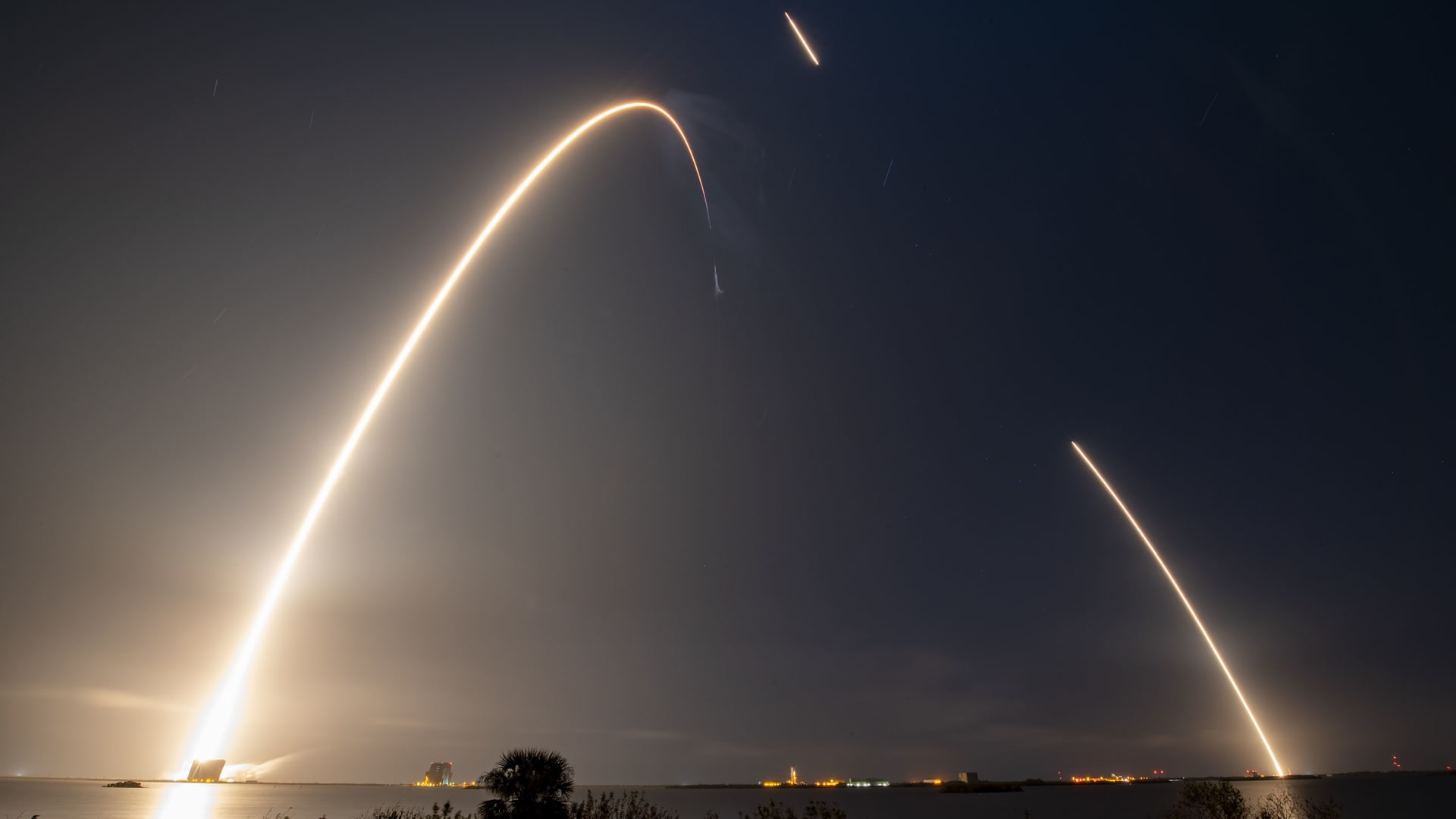
A long exposure photo shows the path of SpaceX’s Falcon 9 rocket as it launched the ispace mission on Dec. 11, 2022, with the rocket booster’s return and landing visible as well.
SpaceX
Japanese lunar exploration company ispace began its long-anticipated first mission on Sunday, with a SpaceX Falcon 9 rocket launching the venture’s lunar lander from Florida.
“This is the very, very beginning of a new era,” ispace founder and CEO Takeshi Hakamada told CNBC.
The Tokyo-based company’s Mission 1 is currently on its way to the moon, with a landing expected near the end of April.
Founded more than a decade ago, ispace originated as a team competing for the Google Lunar Xprize under the name Hakuto – after a mythological Japanese white rabbit. After the Xprize competition was canceled, ispace pivoted and expanded its goals, with Hakamada aiming to create “an economically viable ecosystem” around the moon, he said in a recent interview.
The company has grown steadily as it worked toward this first mission, with over 200 employees around the world – including about 50 at its U.S. subsidiary in Denver. Additionally, ispace has steadily raised funds from a wide variety of investors, bringing in $237 million to date through a mixture of equity and debt. The investors of ispace include the Development Bank of Japan, Suzuki Motor, Japan Airlines, and Airbus Ventures.
The ispace Mission 1 lander carries small rovers and payloads for a number of government agencies and companies – including from the U.S., Canada, Japan, and the United Arab Emirates.
The ispace Mission 1 spacecraft deploys from the upper stage of the Falcon 9 rocket on Dec. 11, 2022.
SpaceX
Before the launch, ispace outlined 10 milestones for the mission – with the company having completed the first three so far: Preparation for launch, deployment after launch, and then establishing a communication link. Next up is to maneuver in orbit, and then a one-month period flying through space before entering the moon’s orbit. The milestones demonstrate the complexity and difficulty of ispace’s mission, with Hakamada emphasizing both his confidence in the mission, as well as noting that each milestone represents another step forward for the company’s goals.
“I have 100% trust in our engineering team, they have been doing the right things to accomplish our successful landing on the lunar surface,” Hakamada said.
If successful, ispace would be the first private company to land on the moon – a feat previously accomplished by global superpowers.
The lunar landeer for the company’s Mission 1.
ispace
